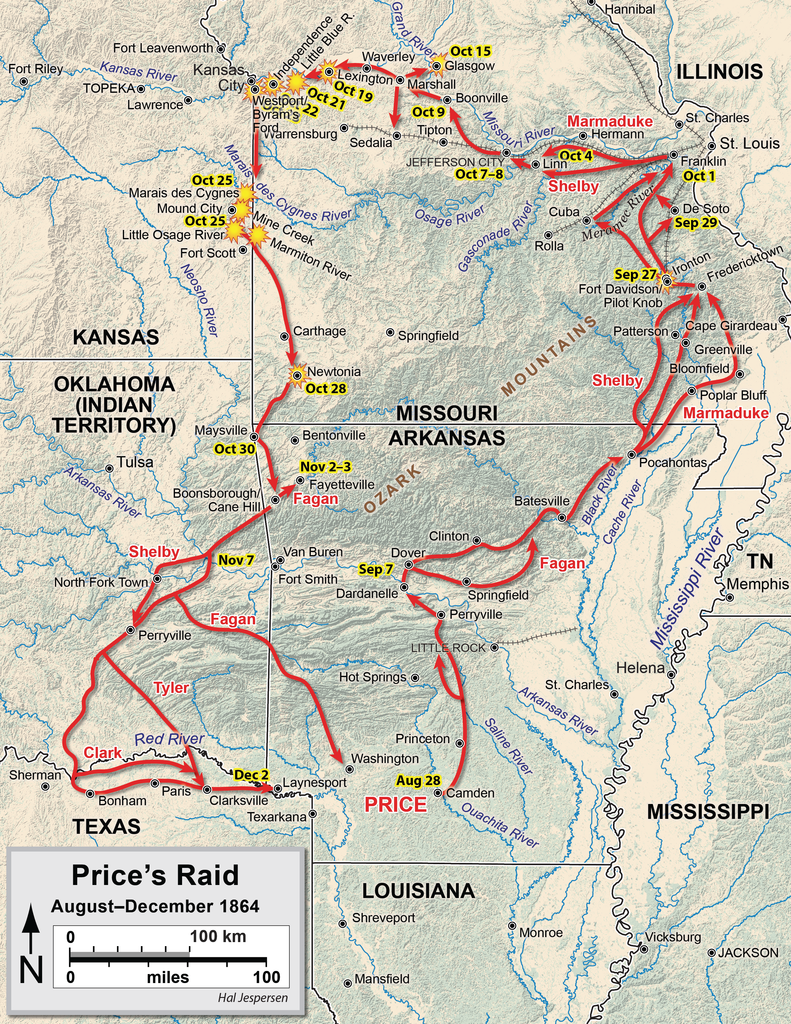Mark Costin on “Price’s Raid: 1864 Confederate Campaign in Missouri”

By 1864 Missouri had been in Union control for two years. Believing that Missourians wanted liberation from Union forces, the Confederates made a desperate attempt to divert Union forces from other war theatres and retake Missouri. The campaign, often referred to as a raid but much larger in actuality, was led by former Missouri Governor General Stirling Price and consisted of 11 major and minor engagements including the battles of Pilot Knob, Westport, and Mine Creek. The campaign was ultimately a disaster for the Confederacy. This talk will outline the strategic situation in Missouri in 1864 as well describe the personalities and battles of the campaign.
Mark Costin is a retired engineer living in Sunnyvale, CA, who previously worked on functional safety for automated and autonomous vehicles. A long time history buff, this is Mark’s second presentation to the the Peninsula CWRT. He holds a Ph.D. in Systems Engineering from Case Western Reserve University, an M.Eng from McMaster University and B.Eng from McGill University.


